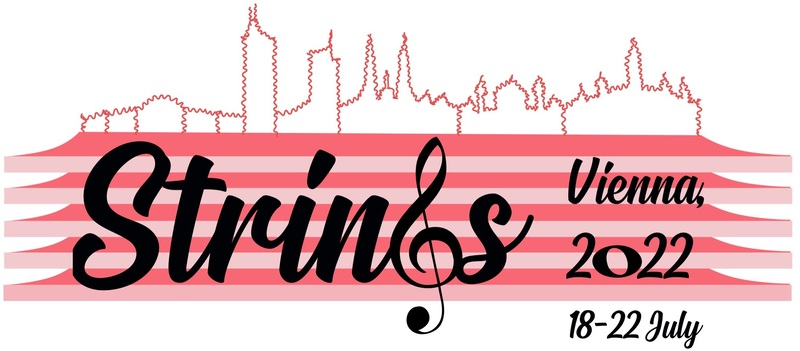Speaker
Description
We show that the behaviour of 2D vacuum transitions is reminiscent of the CFT$_2$/CFT$_1$ correspondence. In doing so, we perform the calculation in 3 different methods, namely the Euclidean formalism of Coleman-de Luccia and Brown-Teitelboim, and the Hamiltonian method of Fischler, Morgan and Polchinski. The bounces from the Euclidean methods are always proportional to the central charge, thereby signalling that the spacetimes involved are extremal. We then apply the Hamiltonian formalism to JT gravity, showing that it provides a holographic description in terms of $T\bar T$-deformed CFTs.
The extremised action on either side of the transition, is equivalent to the generalised entropy, $S_{gen}$, introduced by Maldacena et al. The actions for transitions involving pure AdS$_2$ and/or AdS$_2$ black hole spacetimes agree with the results obtained by Van Raamsdonk et al. within the context of mutual approximation between states belonging to different CFT$_2$s separated by a 1D interface CFT. In particular, for the case of pure AdS spacetimes, $S_{tot}$ is proportional to the entropy of the ICFT, hence to the holographic central charge of the defect, $c_{hol}$. Generalisations of the c-theorem imply that the action diverges upon taking the flat limit, thereby showing an analogous behaviour to the information loss paradox that first motivated the island proposal.
This divergence can be cured in the Hamiltonian method by adding a constant term in the Lagrangian density, which is mapped to the black hole mass in the corresponding metric solution, and therefore agrees with the proposal made by Maldacena that false vacuum decays to a portion of AdS are allowed by the AdS/CFT correspondence. Indeed, such CFT-deformations are dual to bulk IR-cutoffs, and their relevance for our purposes is thereby twofold: it ensures the flat limit can be taken while keeping $S_{tot}$ finite; furthermore, it legitimates our description of nucleation processes as being purely local phenomena. We further extend this argument to the case of pure dS$_2$ transitions, showing that the corresponding 2D cosmological horizon actually plays the role of a cutoff codimension-2 surface, which should be understood as being part of the entanglement entropy. Finiteness in the flat limit can be recovered in analogy with the AdS case.
The nucleation processes can be embedded in the wedge-holographic limit of an AdS$_3$ /BCFT$_2$ setup with 2 ETWs. In absence of conical defects, $S_{tot}$ is holographically equivalent to the Hartman-Maldacena-surface anchored to the defect CFT and ending on the event horizon of the TFD in the IR-bulk. Under a shift of the spacetime parameters, $S_{tot}$ is monotonic, resembling the Von Neumann entropy. On the other hand, in presence of conical defects, beyond a certain black hole mass threshold, $S_{tot}$ experiences a phase transition in between the HM and the HRRT surfaces intersecting the ETW brane, thanks to the presence of additional horizon contributions which are not part of $S_{EE}$, and we identify with the boundary of the island.
These findings suggest that ascertained results in wedge holography, defect CFTs and confinement could also be used for describing higher dimensional vacuum transitions.




